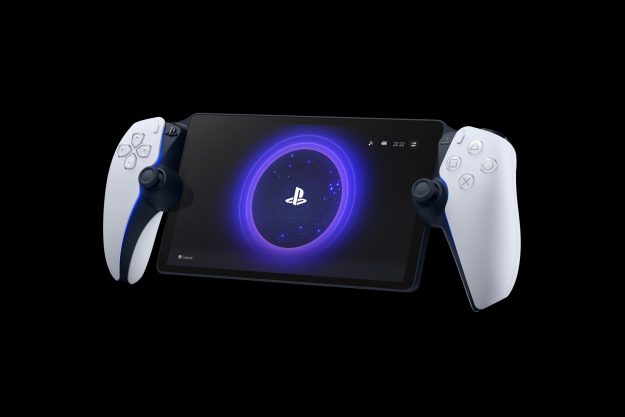Rumor has it that Nvidia will add Stadia support to the Shield, its sorta-kinda game console and part-time streaming entertainment hub. That wouldn’t be a surprise, if true, and Nvidia wouldn’t be alone in adding Stadia to its pitch. Atari reps told me at E3 that its upcoming VCS console would make a great cloud gaming platform. It’s not what they built the VCS to do, but it can handle cloud gaming in style.
Almost anything can be used to play Stadia. The same is true of every cloud gaming service that’s accessible through a web browser or widely distributed app. This convenience is the most alluring part of Google’s pitch. It also could lead to another wave of terrible, awful, no-good game consoles.
If anyone can make a console, they will
Launching a game console is hard. Microsoft, Nintendo, and Sony have all suffered at least one major dud. They survived, but many don’t. Remember Sega? It was forced out of hardware after the Sega Saturn and Dreamcast struggled to sell more than a few million units, despite its prior success.
That famous fall from grace is only the most memorable. Atari, Commodore, Philips, and Pioneer are all part of this not-so-illustrious group. Even Apple tried to launch a game console called the Pippin in 1994. Seriously. It was a thing.
This pattern of failure has repeated in recent years, but with a twist: Crowdfunding. This new source of funds, along with lower production costs and easy access to inexpensive ARM processors used by smartphones, let companies with little experience enter the fray.

The results were grim. Ouya fell flat on its face and sold its software assets to Razer in 2015. The Coleco Chamelon failed after gamers noticed the prototypes appeared to be fakes. The Sinclair ZX Spectrum Vega Plus sucked up $644,000 on Indiegogo but failed to ship. These were just the tip of the spear. Countless odd-balls and false starts have appeared on crowdfunding sites worldwide.
These projects show the ugly side of lowering the barrier to building a new console. It can lead to innovations like the Nintendo Switch, which is powered by an expensive ARM-derived chip. But it can also lead to half-baked concepts that never should’ve moved past conception.
Stadia asks, how low can you go?
The wave of unfortunate crowdfunded consoles appeared because the bar was lowered. Now, Google’s Stadia (and services like it) are about to drop the bar to the floor.
Cloud gaming moves processing power from your local device to a remote data center. That means your local “console” could be just about anything. Google says you can play Stadia games on your TV with the Chromecast Ultra, a 4K media player that sells for $60. Technically, even that is overkill. You could play Stadia on an even cheaper stick if you don’t mind sticking to 1080p.
You won’t be able to play Stadia games on just any media player at launch thanks to Google’s questionable decision to make the Chromecast Ultra mandatory. But there’s a workaround. Stadia also works with the Chrome browser. Stadia should play on anything that can run Chrome.
It won’t take long for others to realize what Atari and Nvidia already have. Tens of thousands of companies across the globe can slap together a cheap TV stick capable of playing Chrome and connecting to a gamepad over Bluetooth. Right now, in offices across the world, product leads are learning their company can build a $50 device that gains entry to a $150 billion industry. Powerpoints are being assembled as you read this.
These cloud gaming consoles will mimic Stadia’s own marketing, and pitch themselves on price and ease of use. Now you can play games at
Could cloud gaming consoles ever make sense?
Nope. It’s going to be a total mess.
Atari and Nvidia have a point, but that doesn’t mean it’s relevant to most gamers. Consider Atari’s VCS — I liked what I saw of it at E3. It’s a sleek little box that has real potential among enthusiast PC gamers who are willing to hand over at least $250 for a fully functional x86 computer they can stick beside a TV.
My point is this: Don’t waste your money.
But there’s no good reason to use it for
The outlook is worse for the currently unknown companies that will enter with their own cloud
Alright. Now that I’ve thoroughly smeared a genre of game consoles that aren’t even here yet, you might have a question. Why? What’s my point?
My point is this: Don’t waste your money.
All of this has happened before, and not just in game consoles. Similar stories have played out in 3D printers, low-cost computers, and smartphones. New technology lowers the barrier to entry. Companies seize the opportunity to try something new. Starry-eyed tech fans plunk down cash for crowdfunding or preorders. Several years and delays later, the project is canceled or ships with fewer features and content than anticipated.
Cloud gaming could change gaming forever. Don’t get caught falling for the same tired, half-baked promises.
Editors' Recommendations
- I was wrong about cloud gaming. One small setup change showed me the light
- Fortnite is coming back to iOS, but Epic Games still isn’t happy about it
- Video game adaptations are about to change the game in 2024
- The best third-party video game controller is about to get even better
- PS Plus members can cloud stream PS5 games in 4K later this month


